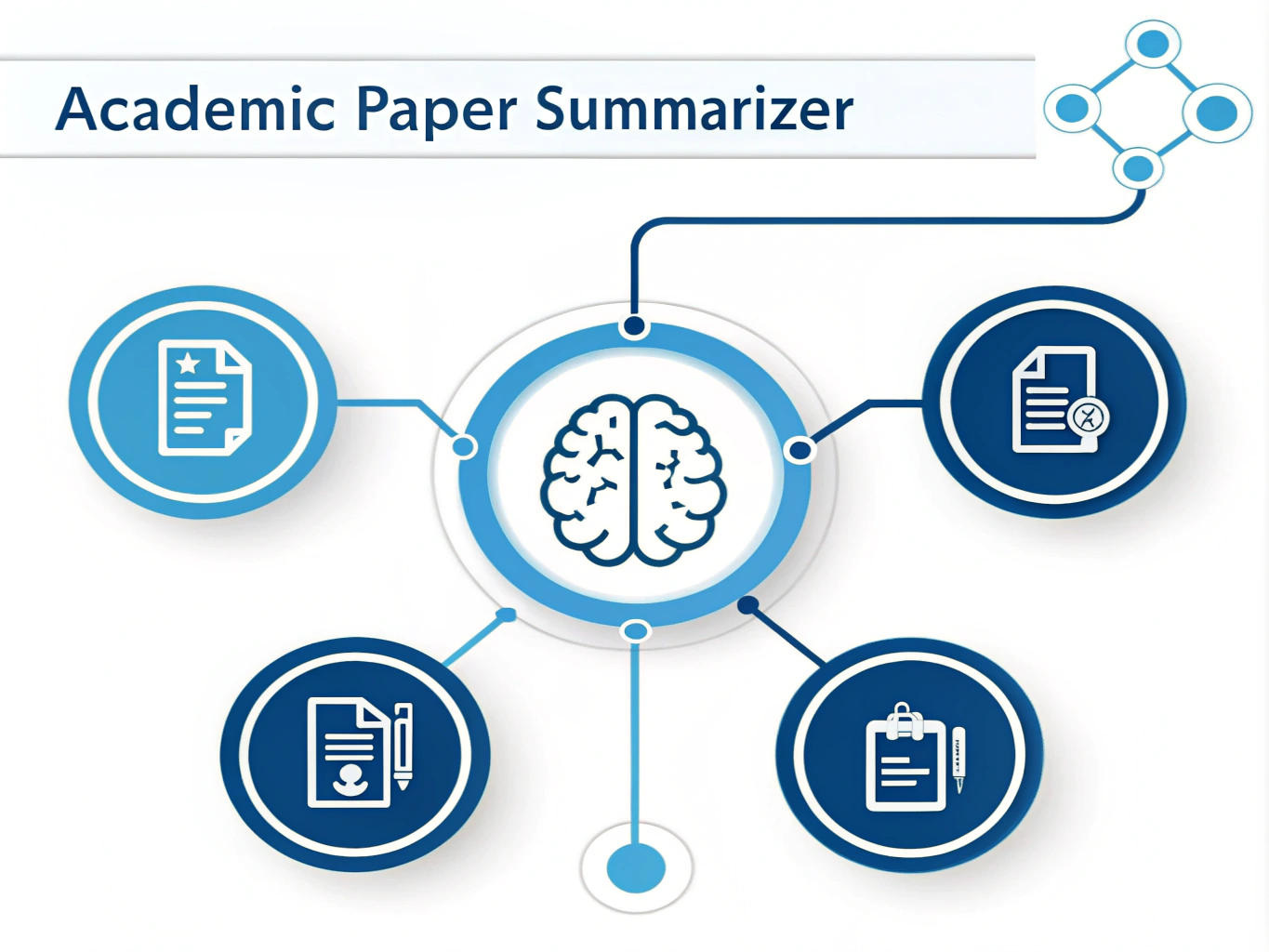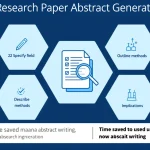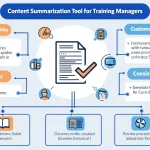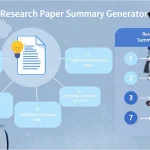Academic Paper Summarizer
Is this tool helpful?
How to Use the Academic Paper Summarizer Tool Effectively
The Academic Paper Summarizer Tool helps you quickly extract key points from detailed scientific papers. Follow these steps to get accurate and useful summaries:
- Gather the full text: Collect the entire content of the academic paper you want to summarize. Include key sections such as the abstract, introduction, methodology, results, discussions, and conclusions.
- Copy the content: Select and copy all the text. Complete input improves summary accuracy.
-
Paste into the input box: Find the text area labeled Full text of the academic paper to be summarized and paste the copied material there. For example, you could input:
- “A Comprehensive Study on Renewable Energy Adoption in Urban Areas” by Maria Lopez and David Kim
- “Innovations in CRISPR Technology for Gene Therapy” by Anil Patel and Fatima Hassan
- Check your input: Make sure the full text is present without unintentional omissions.
- Start summarization: Click the summarize button to let the tool process the paper using advanced natural language processing techniques.
- Wait as it processes: The tool takes a few moments depending on text length. You’ll see a processing indicator during this time.
- Review the generated summary: The summary appears below the form, organized into key sections like title and authors, main objective, methodology, notable features, experiments, conclusions, and limitations.
- Copy the summary as needed: Use the provided copy option to easily save the summary for your notes, research, or presentations.
For instance, you might summarize a paper titled “Deep Learning Approaches for Medical Image Analysis” by Sarah Nguyen and Thomas Lee, or another called “Economic Impact of Artificial Intelligence on Global Markets” by Rachel Adams and Mark Thompson. The tool will highlight the essential findings and research contributions in each case.
Introduction to the Academic Paper Summarizer Tool
What Is the Academic Paper Summarizer Tool?
The Academic Paper Summarizer Tool is an AI-driven system that uses natural language processing to extract and condense information from scientific documents. It transforms lengthy, complex texts into clear, structured summaries, enabling you to quickly understand the paper’s purpose, methods, results, and conclusions.
Purpose and Benefits
This tool helps you keep pace with academic research by saving time and improving comprehension. Instead of reading entire documents, you get an organized overview highlighting the main points, so you can focus on what matters most.
- Save time: Quickly grasp the essence of papers without reading them fully.
- Improve understanding: Structured summaries clarify complex scientific content.
- Speed up literature reviews: Easily scan many papers to find relevant studies.
- Accessible knowledge: Summaries make research available to diverse audiences.
- Consistent format: Compare different papers efficiently with standardized summaries.
Practical Applications of the Academic Paper Summarizer Tool
Efficient Literature Reviews
If you are a graduate student or researcher preparing your thesis or dissertation, this tool significantly reduces the time spent digesting multiple papers. You can quickly identify research gaps, important methodologies, and significant findings, which helps you shape your study’s direction.
Supporting Research Teams
Research groups, especially in fast-moving fields like biotechnology or computer science, benefit from timely summaries that highlight recent advancements. Teams can stay updated, identify promising experiments, and focus their efforts more strategically.
Enhancing Science Communication
Journalists and communicators use this tool to swiftly understand new research for their articles. It helps distill detailed scientific works into digestible points, supporting accurate and clear science reporting.
Facilitating Interdisciplinary Research
When working across fields, you may encounter jargon and concepts outside your expertise. This summarizer breaks down technical language and organizes key ideas, making it easier to grasp unfamiliar research.
Examples of Use Cases
- Environmental scientists analyzing climate study papers to identify key trends and policy implications.
- Medical researchers reviewing clinical trial results for new treatments in oncology.
- Educators preparing course materials by summarizing recent advancements relevant to their subjects.
- Business analysts exploring the impact of AI on financial markets via academic data.
Why Use This Academic Paper Summarizer Tool?
1. Maximize Your Research Efficiency
Reading academic papers fully can consume hours, especially when sorting through many articles. This summarizer condenses content into minutes of review, freeing your time for analysis and application.
2. Understand Complex Academic Topics Faster
Scientific writing often includes dense language and technical details. The tool extracts the core information and presents it clearly, helping you grasp important research without getting lost in jargon.
3. Support for Comprehensive Literature Reviews
By generating summaries in a consistent format, the tool simplifies comparing multiple studies. You quickly see similarities, differences, and trends across your research materials.
4. Enhance Accessibility to Research
Not everyone has a scientific background. This tool helps students, policymakers, and professionals understand research findings quickly, supporting informed decisions and discussions.
5. Overcome Language Barriers
Researchers who are non-native English speakers can use the summarizer to clarify complex academic English, smoothing the path to understanding global research.
Addressing Key Challenges with the Academic Paper Summarizer Tool
Handling Information Overload
With thousands of papers published daily, keeping up can be overwhelming. The tool condenses vast information into manageable summaries, helping you focus on the most relevant studies.
Managing Time Constraints
You balance research, teaching, and other responsibilities. This tool reduces the time spent on reading by delivering quick summaries, letting you allocate your efforts where they matter most.
Supporting Interdisciplinary Collaboration
Complex projects often require understanding multiple scientific domains. Summaries provided help translate concepts and methods beyond your specialty.
Improving Literature Review Workflow
The tool accelerates the early phase of research by helping you screen many papers rapidly, thereby prioritizing your in-depth reading list effectively.
Making Research More Accessible to Non-Specialists
Journalists, policymakers, and educators often need to grasp research quickly. By receiving concise, well-organized paper summaries, they can stay informed without the need for technical expertise.
Summary
The Academic Paper Summarizer Tool streamlines the analysis of scientific literature by providing clear, structured summaries of complex research. It saves you time, improves your understanding, and supports efficient literature reviews. Use it whenever you need to quickly assess academic papers, support interdisciplinary teamwork, or make research accessible to a broader audience.
Important Disclaimer
The calculations, results, and content provided by our tools are not guaranteed to be accurate, complete, or reliable. Users are responsible for verifying and interpreting the results. Our content and tools may contain errors, biases, or inconsistencies. Do not enter personal data, sensitive information, or personally identifiable information in our web forms or tools. Such data entry violates our terms of service and may result in unauthorized disclosure to third parties. We reserve the right to save inputs and outputs from our tools for the purposes of error debugging, bias identification, and performance improvement. External companies providing AI models used in our tools may also save and process data in accordance with their own policies. By using our tools, you consent to this data collection and processing. We reserve the right to limit the usage of our tools based on current usability factors.







